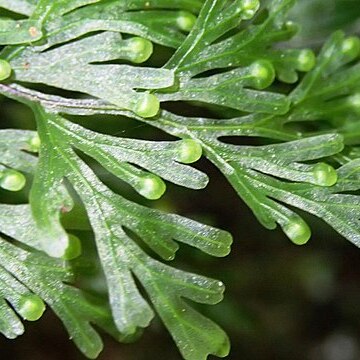Rhizome slender, spreading, much-branched; clad, especially when young, in long yellow-brown hairs. Stipites rather distant to crowded. Stipes slender, not winged, with tuft of hairs at base, 2-10 cm. long. Rhachis slender, winged only in upper part, ± clad in pale brown hairs. Lamina ovate to narrow-oblong, yellowish to pale green, 3-15 cm. long; 2-4-pinnatifid; final segs linear, obtuse. Sori us. on lateral segs, slightly immersed. Indusium 1 mm. diam., suborbicular; 2-valved to more than halfway; valves entire or nearly so. Receptacle included to slightly exserted.

